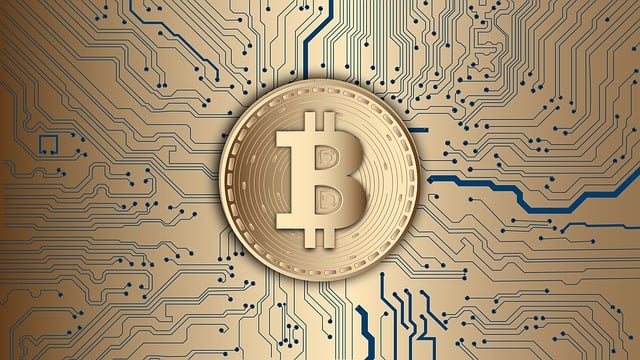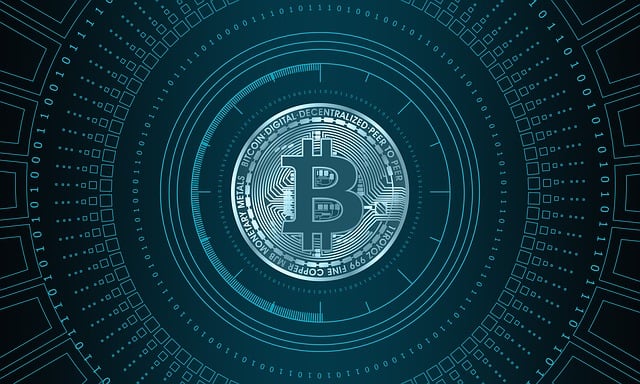The relationship between cryptocurrency and inflation is dynamic and complex. During periods of high inflation, investors often turn to cryptocurrencies as a hedge against currency devaluation, driving up prices. This market sensitivity to inflation is amplified by crypto's decentralized nature and limited supply. However, central bank monetary policies, like interest rate hikes, can redirect investment towards traditional markets, causing cryptocurrency price volatility. Historical events highlight the resilience of some cryptocurrencies during economic crises, but overall market stability remains vulnerable. To navigate this volatility, investors must understand the impact of inflation on crypto markets, diversify portfolios, and stay informed about regulatory trends and DeFi innovations aimed at mitigating price fluctuations.
In an era where digital assets have gained prominence, understanding the intricate relationship between cryptocurrency and economic indicators like inflation is paramount. This article delves into the multifaceted impact of inflation on crypto markets, exploring its sensitivity and the subsequent effects on decentralized finance. We analyze central bank policies, historical precedents, and investor strategies to navigate default risks. Additionally, it offers insights into mitigating the impact of rising inflation on cryptocurrencies, providing a comprehensive guide for investors navigating these volatile times.
- Understanding Crypto Markets and Their Sensitivity to Inflation
- The Direct Effects of Rising Inflation on Cryptocurrencies
- How Central Bank Policies Impact Crypto in Times of Economic Uncertainty
- Historical Perspective: Crypto Market Responses to Past Inflationary Periods
- Strategies for Investors Navigating the Default Risk in Cryptocurrency
- Future Outlook: Mitigating the Impact of Inflation on Digital Assets
Understanding Crypto Markets and Their Sensitivity to Inflation

In the dynamic landscape of cryptocurrency, understanding the intricate relationship between these digital assets and macroeconomic factors is paramount. One such factor that significantly influences crypto markets is inflation—a concept that has traditionally been a concern for traditional financial systems but has taken on new dimensions in the decentralized realm. The impact of inflation on crypto markets is profound due to several unique characteristics of cryptocurrencies, including their decentralized nature, limited supply (in the case of certain tokens), and global accessibility. As the value of fiat currencies decreases over time, investors often turn to cryptocurrencies as a potential hedge against inflation.
When inflation rises, the purchasing power of money erodes, leading investors to seek assets that can maintain or increase their value. Cryptocurrencies with limited supply, such as Bitcoin, have historically been viewed as attractive stores of value in this regard. The sensitivity of crypto markets to inflationary pressures is further exacerbated by market speculation and sentiment. As prices rise, a positive feedback loop can ensue, driving up demand and further increasing prices—a dynamic that has been observed during periods of economic uncertainty. Conversely, deflationary concerns can also impact crypto markets as investors may prefer assets that retain or increase their purchasing power over time.
The Direct Effects of Rising Inflation on Cryptocurrencies

In the volatile world of cryptocurrency, rising inflation has a direct and significant impact. When inflation increases, the purchasing power of traditional fiat currencies decreases, leading many investors to seek alternative investments like cryptocurrencies as a hedge against inflation. This shift in investment trends can cause a ripple effect in crypto markets; as more money flows into digital assets, their prices tend to appreciate. However, this relationship is not without complexities. Cryptocurrencies, being relatively new and less regulated, are often seen as high-risk investments. Thus, while rising inflation may initially boost their value, the volatility inherent in crypto markets can lead to significant price swings.
The impact of inflation on crypto markets extends beyond investment behavior. As inflation rises, central banks often adjust monetary policies, such as increasing interest rates, to combat it. These policy changes can influence market sentiment and potentially affect cryptocurrency prices. Higher interest rates might discourage speculation in cryptocurrencies, while the search for yield could drive some investors back into traditional financial instruments. Therefore, understanding the complex interplay between inflation, monetary policies, and crypto markets is crucial for both investors and policymakers alike.
How Central Bank Policies Impact Crypto in Times of Economic Uncertainty

In times of economic uncertainty, Central Bank policies play a pivotal role in shaping the trajectory of cryptocurrency markets. When traditional financial systems face strain, central banks often employ tools like interest rate adjustments and quantitative easing to stimulate economies. These actions can significantly influence crypto assets. For instance, during periods of high inflation, as seen recently, central banks may increase interest rates to curb spending and borrowing, potentially dampening the sentiment in volatile crypto markets. As a result, investors might shift from riskier assets like cryptocurrencies to more stable options, leading to market corrections.
The impact of inflation on crypto markets is an intriguing dynamic. While some cryptocurrencies have gained traction as hedge against inflation due to their limited supply and decentralized nature, overall market stability remains susceptible to economic policies. Central Bank decisions regarding monetary supply and support can drive investment flows, affecting the price and adoption of digital currencies. As such, investors closely monitor central bank communications, seeking insights into potential market-moving actions that could shape the future of both traditional finance and the emerging crypto sector.
Historical Perspective: Crypto Market Responses to Past Inflationary Periods

The crypto market’s unique characteristics and decentralized nature often lead to intriguing historical perspectives when examining past economic events, especially inflationary periods. Historically, cryptocurrencies have shown varying responses to inflation, offering a fresh perspective on how digital assets might behave in such scenarios. During times of high inflation in traditional markets, investors have increasingly turned to cryptocurrencies as a potential hedge against currency devaluation. The impact of inflation on crypto markets has been significant, with many tokens demonstrating resilience and even substantial growth during periods of economic uncertainty.
For instance, the global financial crisis of 2008 sparked a surge in Bitcoin’s popularity, as investors sought alternative stores of value. Similarly, recent historical instances of hyperinflation in various countries have correlated with heightened interest in cryptocurrencies, reflecting a growing desire for assets that offer protection against inflationary pressures. This dynamic highlights the potential role crypto markets may play in future economic landscapes, especially as a means of preserving wealth and diversifying investment portfolios.
Strategies for Investors Navigating the Default Risk in Cryptocurrency

Navigating the volatile nature of cryptocurrency markets presents a unique challenge for investors, especially when considering default risk. With the ever-changing dynamics of digital assets, understanding and mitigating potential defaults is crucial. One significant factor that influences this risk is the impact of inflation on crypto markets. As traditional fiat currencies experience inflationary pressures, investors may turn to cryptocurrencies as a hedge against eroding purchasing power. However, this shift can also lead to increased market volatility, making default more probable in the event of a sudden loss of investor confidence.
To mitigate these risks, investors should diversify their portfolios across various assets. This strategy helps reduce exposure to any single cryptocurrency and its potential default. Additionally, staying informed about regulatory changes and keeping an eye on market trends can provide insights into stablecoins and other crypto assets with stronger backing, thereby reducing the likelihood of default.
Future Outlook: Mitigating the Impact of Inflation on Digital Assets

In the evolving landscape of digital assets, understanding and mitigating the impact of inflation remains a key challenge for investors and enthusiasts alike. As traditional monetary policies shift, crypto markets are increasingly exposed to the volatile effects of inflation, posing significant risks to long-term investment strategies. The intricate relationship between inflation rates and cryptocurrency values is a complex web that requires meticulous navigation.
Looking ahead, the future outlook for digital assets hinges on innovative approaches to combat inflation’s impact. Decentralized finance (DeFi) platforms offer promising solutions by providing dynamic yield farming mechanisms and stablecoins designed to cushion price fluctuations. Additionally, the integration of advanced algorithms and predictive analytics can empower investors with data-driven insights, enabling them to make informed decisions in a rapidly changing market. By embracing these developments, the crypto ecosystem aims to foster resilience and stability, ensuring that digital assets remain viable stores of value despite economic headwinds.
The volatile nature of crypto markets, closely tied to global economic shifts, is evident when examining the impact of inflation. From understanding market dynamics to central bank interventions and historical insights, investors can better navigate these uncertain times. By adopting strategic approaches and staying informed about policy changes, individuals can mitigate risks associated with cryptocurrency defaults during periods of rising inflation. This conclusion highlights key takeaways, emphasizing the importance of proactive measures in safeguarding digital assets from economic downturns.
